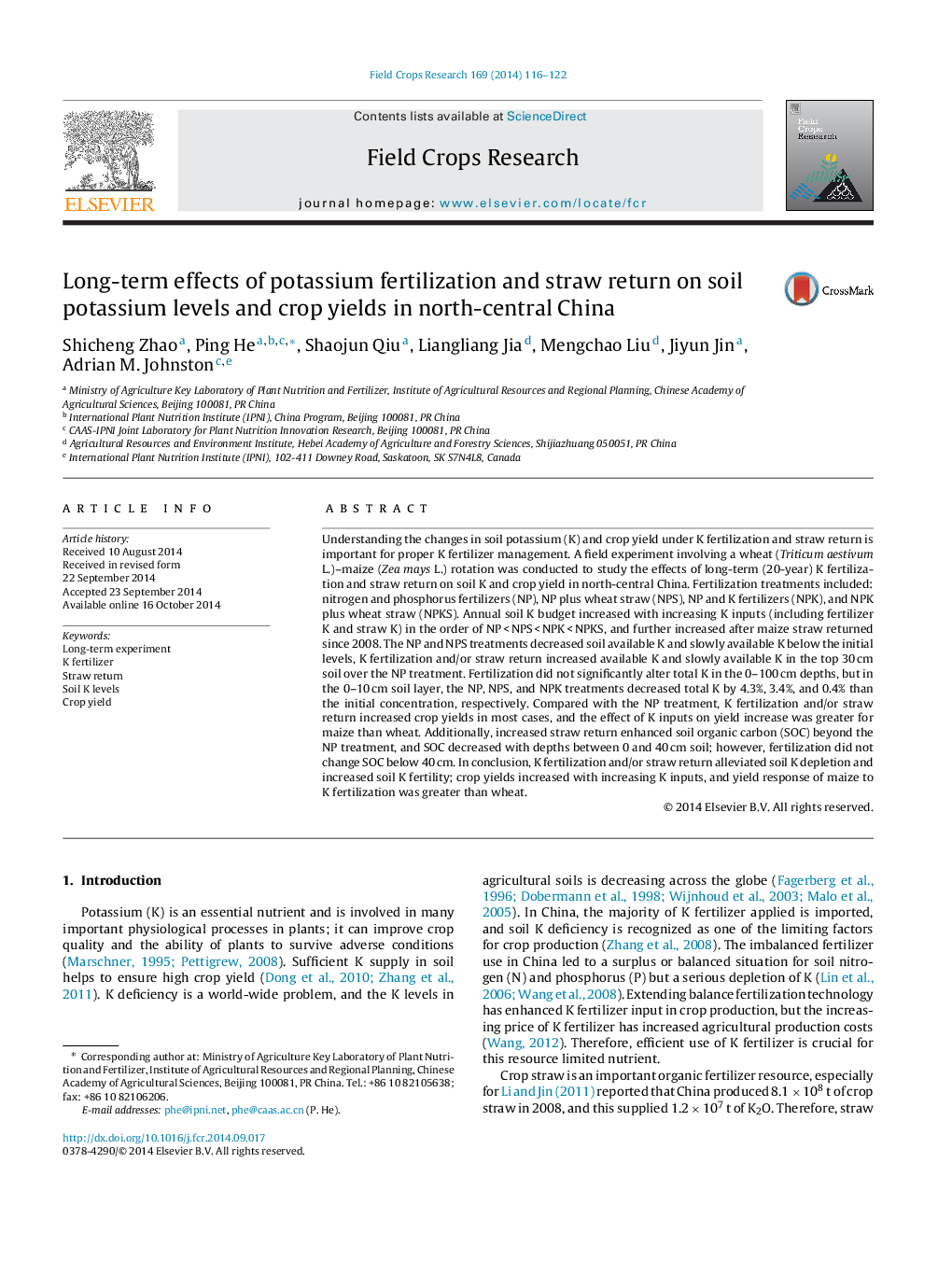| کد مقاله | کد نشریه | سال انتشار | مقاله انگلیسی | نسخه تمام متن |
|---|---|---|---|---|
| 4509955 | 1624694 | 2014 | 7 صفحه PDF | دانلود رایگان |
• K fertilization and/or straw return alleviated soil K depletion.
• Fertilization strategies influenced soil K levels mainly in the 0–30 cm depth.
• Straw return increased soil organic C sequestration in the top 40 cm.
• K fertilization and/or straw return increased crop yield.
• K fertilizer should be prior applied in maize to enhance yield and K efficiency.
Understanding the changes in soil potassium (K) and crop yield under K fertilization and straw return is important for proper K fertilizer management. A field experiment involving a wheat (Triticum aestivum L.)–maize (Zea mays L.) rotation was conducted to study the effects of long-term (20-year) K fertilization and straw return on soil K and crop yield in north-central China. Fertilization treatments included: nitrogen and phosphorus fertilizers (NP), NP plus wheat straw (NPS), NP and K fertilizers (NPK), and NPK plus wheat straw (NPKS). Annual soil K budget increased with increasing K inputs (including fertilizer K and straw K) in the order of NP < NPS < NPK < NPKS, and further increased after maize straw returned since 2008. The NP and NPS treatments decreased soil available K and slowly available K below the initial levels, K fertilization and/or straw return increased available K and slowly available K in the top 30 cm soil over the NP treatment. Fertilization did not significantly alter total K in the 0–100 cm depths, but in the 0–10 cm soil layer, the NP, NPS, and NPK treatments decreased total K by 4.3%, 3.4%, and 0.4% than the initial concentration, respectively. Compared with the NP treatment, K fertilization and/or straw return increased crop yields in most cases, and the effect of K inputs on yield increase was greater for maize than wheat. Additionally, increased straw return enhanced soil organic carbon (SOC) beyond the NP treatment, and SOC decreased with depths between 0 and 40 cm soil; however, fertilization did not change SOC below 40 cm. In conclusion, K fertilization and/or straw return alleviated soil K depletion and increased soil K fertility; crop yields increased with increasing K inputs, and yield response of maize to K fertilization was greater than wheat.
Journal: Field Crops Research - Volume 169, December 2014, Pages 116–122
